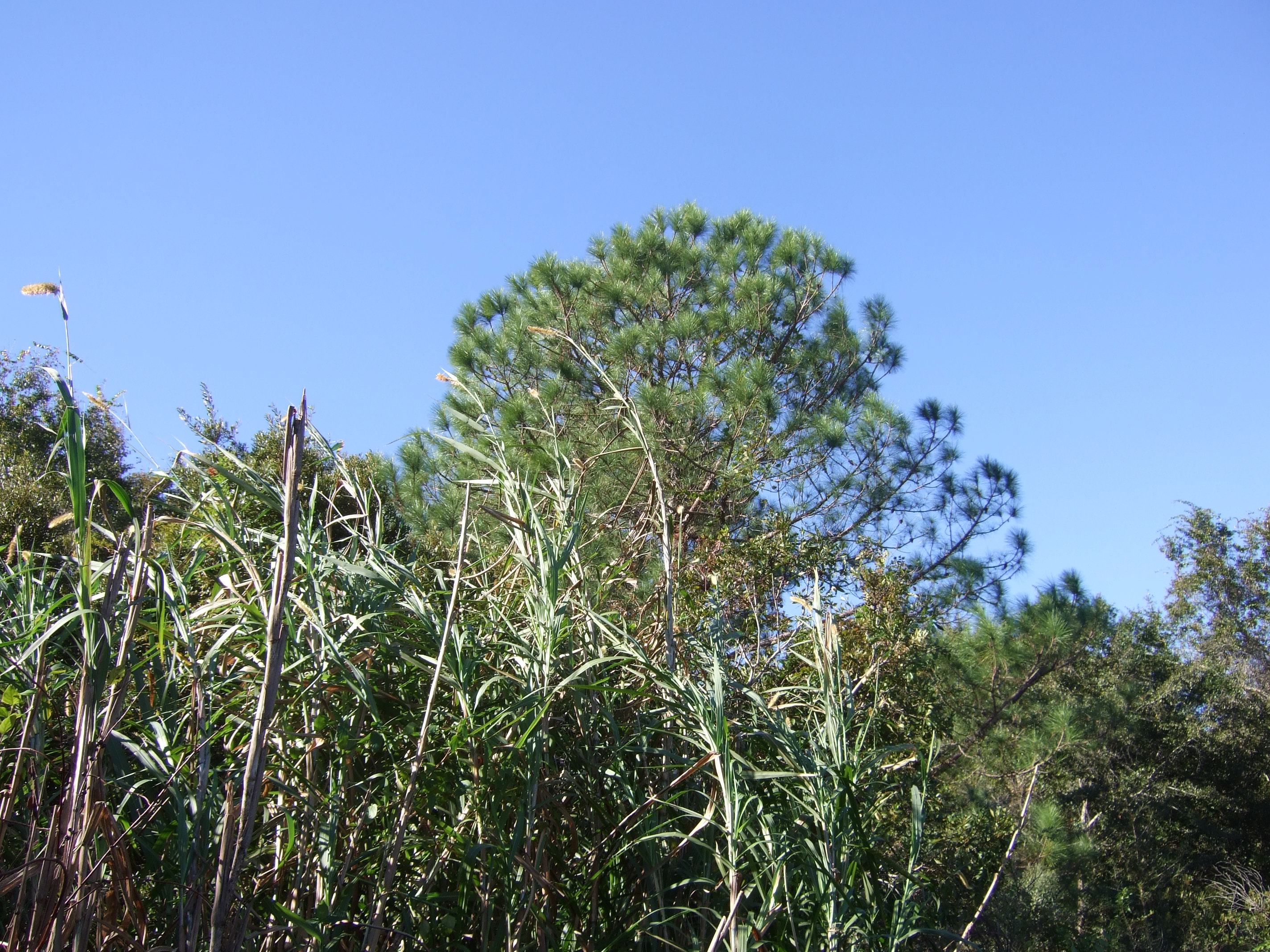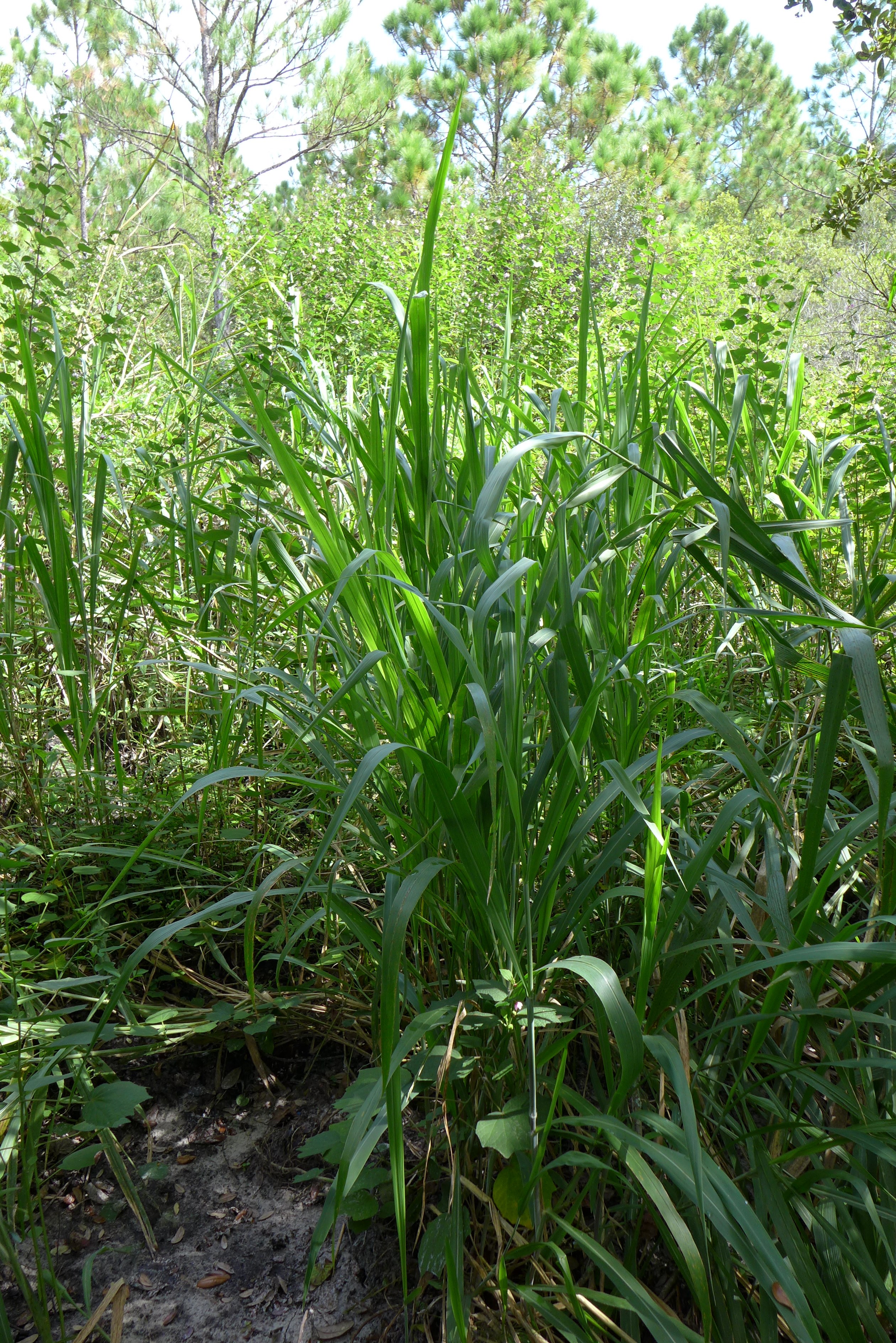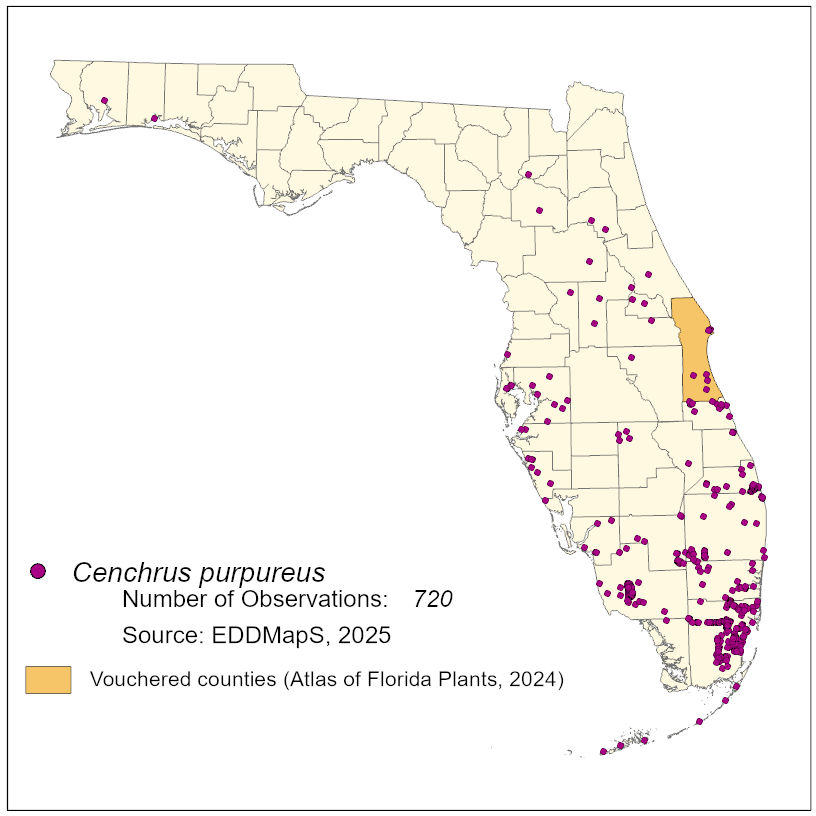Common Name: Napier grass
Family: Poaceae
Common Synonyms: Pennisetum purpureum
USDA Hardiness Zone: 7b-11
Growth Habit: Large, perennial grass
Origin: NA
FISC Category: 1
FDACS Listed Noxious Weed: No
Introduction Date: 1913
IFAS Assessment:


Large grass with erect stems that can grow up to 5 m tall. Leaves up to 4 cm wide and 1 m or more long and are flat and have very fine teeth along margins and few hairs on leaf surface. The ligule has long hairs. Flowers in long tan to green cylindrical spikes (13 to 30 cm long). Each spike is composed of numerous spikelets with bristles.
Ruderal, edges of disturbed waterways, pastures, scrub, hammocks, floodplain swamp, and other wetland habitats
Prevents regeneration of native species. Known to block flood control systems and reduce water flow in water ways.

NA
Langeland, K.A. and K. Craddock Burks. 1998. Identification and Biology of Non-Native Plants in Floridas Natural Areas. IFAS Publication SP 257. University of Florida, Gainesville. 165 pp.
IFAS, Center for Aquatic and Invasive Plants. 2017. Pennisetum purpureum. http://plants.ifas.ufl.edu/plant-directory/pennisetum-purpureum/Accessed September 19, 2017.
IFAS, UF. 2017. Assessment of Non-Native Plants in Florida's Natural Areas. Pennisetum purpureum. https://assessment.ifas.ufl.edu/assessments/pennisetum-purpureum/Accessed September 19, 2017.